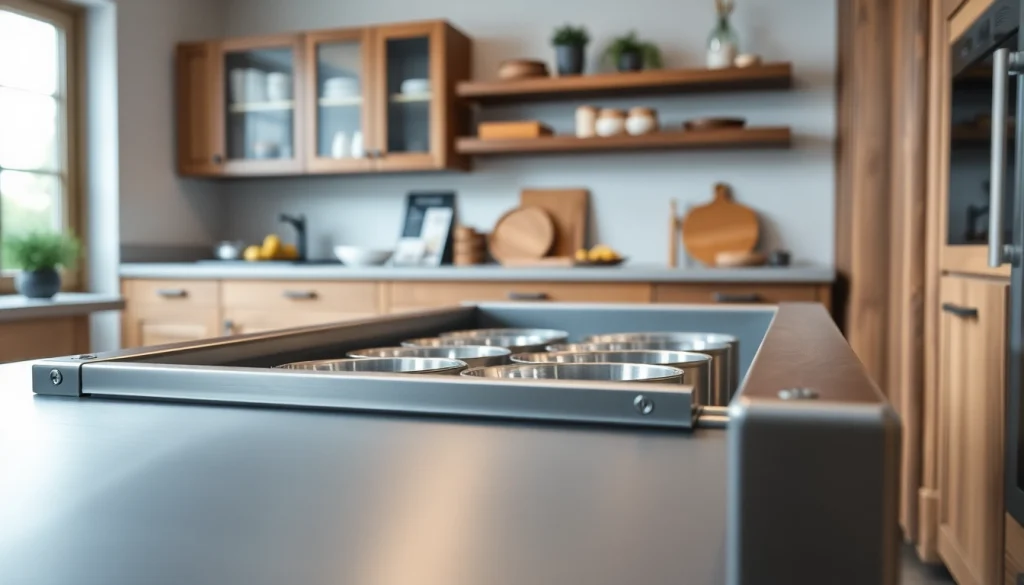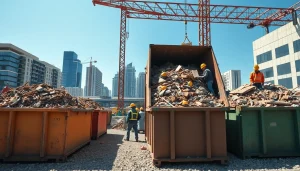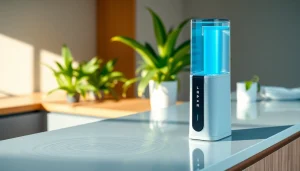Essential Features and Benefits of a Metal Drawer System for Modern Kitchens

Introduction to Metal Drawer Systems
As storage needs continue to evolve in both residential and commercial spaces, solutions that offer durability, accessibility, and aesthetic appeal are becoming paramount. Metal Drawer Systems have emerged as a frontrunner in providing a robust storage solution. These systems utilize high-quality metal materials to deliver strength, longevity, and modern design flexibilities, making them perfect for kitchens, offices, and more.
What is a Metal Drawer System?
A metal drawer system is essentially a unit designed to support sliding drawers made of metal. These frames can be used in various applications, from kitchen cabinets to office furniture. Typically, they consist of several components including the drawer box, the slides, and sometimes, integrated mechanisms that allow for better operation. The use of metal grants these systems enhanced durability compared to traditional wooden counterparts, as metal is resistant to warping and damage.
Key Benefits of Using Metal Drawer Systems
- Durability: Metal drawers are built to last, often exceeding the lifespan of wooden drawers.
- Load Bearing Capacity: Many metal drawer systems are designed to support heavier loads without compromising functionality.
- Aesthetic Appeal: With sleek designs and finish options, metal drawers can enhance the overall look of any space.
- Ease of Maintenance: Metal surfaces are generally easier to clean and do not absorb stains like wood.
- Customizability: They can be tailored with various finishes, colors, and hardware options to match any decor.
Common Applications of Metal Drawer Systems
Metal drawer systems are versatile and can be seen in a variety of settings:
- Residential Kitchens: Ideal for kitchen cabinets where storage needs are high.
- Office Furniture: Used in filing cabinets to keep documents organized and easily accessible.
- Commercial Workspaces: Heavy-duty metal drawer systems are perfect for workshops and garages.
- Retail Display Units: Provide functional storage while contributing to the display aesthetics.
Types of Metal Drawer Systems Available
Ball-Bearing Slide Systems
Ball-bearing slide systems are among the most popular types of metal drawer systems. They feature a series of ball bearings that enable drawers to glide in and out smoothly. These systems are preferred for their ease of operation and ability to handle heavy loads. The benefits include:
- Smooth Operation: Reduced friction means that drawers can be opened and closed effortlessly.
- Stability: Ball bearings reduce wobbling and provide consistent contact with the track.
- Heavy Load Support: Capable of holding significant weight without failing.
Undermount Metal Drawers
Undermount drawer systems are characterized by their hidden slides that are attached beneath the drawer rather than on the sides. This design choice provides a clean finish while maximizing the drawer’s interior space. Key features include:
- Increased Aesthetics: With no visible hardware, these drawers offer a seamless look.
- Adjustability: Many undermount systems include adjustable mechanisms that ensure smooth operation.
Heavy-Duty Metal Drawer Systems
Heavy-duty metal drawer systems are designed specifically for high-demand environments, such as industrial settings or garages. They are engineered to withstand rigorous use and support considerable load capacities. Features include:
- Robust Construction: Built with thicker gauge metal and reinforced structures.
- Extended Rail Systems: Allow for full extension of the drawer, providing maximum access.
- Enhanced Load Capacity: Can typically support over 100 lbs per drawer.
Installation and Maintenance of Metal Drawer Systems
Step-by-Step Installation Guide
Proper installation is crucial to ensure the functionality and longevity of metal drawer systems. Follow these steps for a successful installation:
- Gather Materials: Ensure you have all necessary components including the drawer box, slides, screws, and mounting brackets.
- Measure the Space: Accurately measure the designated area where the drawer will be installed to ensure a perfect fit.
- Attach the Slides: Usually, slides can be attached to the sides of the drawer or at the bottom for undermount systems.
- Mount the Slides: Secure the slides to the cabinet frame at a consistent height to ensure smooth operation.
- Install the Drawer: Carefully insert the drawer into the slides, testing the movement to verify smooth operation.
- Final Adjustments: Make any necessary adjustments to align the drawer properly.
Maintenance Tips for Longevity
To prolong the life of your metal drawer systems, consider the following maintenance tips:
- Regular Cleaning: Wipe down metal surfaces with a damp cloth to remove dust and debris.
- Lubrication: Apply a silicone-based lubricant to the slides periodically for smooth operation.
- Load Management: Avoid overloading drawers beyond the recommended weight capacity to prevent failure.
Common Installation Mistakes to Avoid
While installing metal drawer systems can be straightforward, certain errors can impede functionality:
- Improper Measurements: Not measuring the available space correctly can lead to a poor fit.
- Neglecting Leveling: Failing to level the slides can create operational issues.
- Insufficient Reinforcement: Not properly securing the mounting brackets may weaken the system.
Comparing Metal Drawer Systems with Other Types
Metal vs. Wooden Drawer Systems
When comparing metal drawer systems to wooden ones, several factors can influence your decision:
- Durability: Metal drawers are generally more resistant to wear and tear than wooden counterparts.
- Weight Capacity: Metal systems can support heavier loads without bending or breaking.
- Maintenance: Metal requires less maintenance as it is resistant to most stains and moisture issues which can plague wooden drawers.
Cost Analysis of Different Drawer Systems
Cost is often a determining factor when selecting a drawer system. Metal drawer systems can be pricier than basic wooden systems, but the longevity and reduced maintenance needs often justify the initial investment. A detailed evaluation may include:
- Initial vs. Long-Term Costs: Weigh the upfront cost against expected lifespan and maintenance costs.
- Value for Money: Consider the performance and durability factors to determine overall value.
Durability and Aesthetic Considerations
Durability is a significant advantage of metal drawer systems, while aesthetics can vary widely depending on design choices:
- Diverse Finishes: Available in numerous finishes, metal can complement various decor styles.
- Customization Options: Many manufacturers offer options for custom colors and styles.
Future Trends in Metal Drawer Systems
Innovations in Drawer Technology
The metal drawer system market is continuously evolving with technological innovations that enhance functionality and design. Innovations include:
- Soft-Close Mechanisms: These provide a gentle closing action to prevent slamming.
- Smart Technology: Smart features, such as automatic opening sensors, are emerging.
Sustainability in Metal Drawer Production
A growing emphasis on sustainability is driving manufacturers to adopt eco-friendlier production methods. Key trends include:
- Recycled Materials: More companies are using recycled metals in their products.
- Reduced Waste: Streamlined production processes to minimize material wastage are being implemented.
Consumer Preferences Shaping Future Designs
As consumer preferences evolve, metal drawer systems are adapting with trends focused on:
- Functionality: Increased demand for multifunctional furniture pieces.
- Personalization: Customized solutions that fit individual styles and needs.







